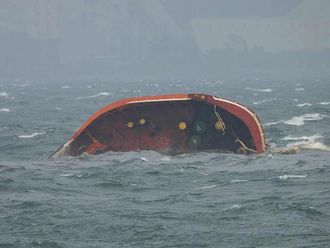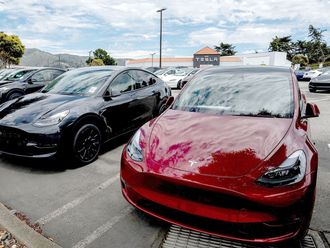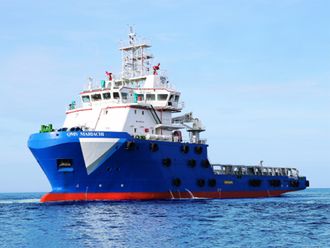Shell's exploration arm yesterday debuted its latest deepwater drilling platform, the $570 million steel giant named Brutus. Brutus is the fifth tension-leg platform built by Shell Exploration and Production Co, a subsidiary of Royal Dutch/Shell Group, and will be anchored in the Gulf of Mexico at a depth of nearly 3,000 feet.
Brutus is due to sail on May 20 from its mooring at Ingleside, on a one-week, 750-mile journey to its permanent station in the Green Canyon area. It will be anchored to the sea floor by a dozen 81-centimetre thick cables which can be tightened or loosened like guitar strings to keep Brutus in place, and free of the heaving of the ocean.
Brutus is slated to drill eight wells on two lease areas located 165 miles south of New Orleans, said Shell's Bob Markway, who heads the Brutus project. Production on Shell's first well there should be on line by August 1, Markway said. "We think we have a shot at a record hole there, a shot at a 50,000 barrel-a-day well," Markway said.
Shell expects a total of 250 million barrels of oil equivalent (BOE) to come from the wells Brutus will drill, with a 70-30 per cent oil-gas ratio. Shell will also operate subsea drilling services from Brutus on a contract basis to companies that do not have the wherewithal to do it on their own, Markway said.
Shell approved the Brutus project in April 1999, and thanks to lessons learned during the construction of its four predecessors, its final fabrication is expected to take about three months and one week. Its projected completion date is May 10.
By comparison, the last tension-leg platform Shell built, the Ram/Powell, took five months to fabricate. The final assembly process, called integration, took place at Gulf Marine Fabricators, a Gulf Coast shipyard owned by French oilfield services company Coflexip SA.
Using a pair of linked cranes that can lift a combined 5,000 tons, workers lifted five prefabricated modules atop Brutus' hull. A team of tugboats maneuvered Brutus' hull into place under the cranes, Brutus integration manager Kelly Bowen of Shell said.
The builders saved time by performing a number of completion tasks simultaneously and in a different order than in the past. "Everything we could do on the ground we did before we lifted a module," Bowen said.
The modules on average weigh 2,500 tonnes, and include living quarters, drilling gear, power generators and processing equipment, he said. Daewoo Heavy Industries built Brutus' 13,500 tonne hull in South Korea.
The hull, consisting of four 50-metre tall columns 20 metres in diameter connected by 61-metre pontoons, arrived in Texas aboard a freighter on January 30, after a nearly two-month journey.
The total cost for the Brutus project is expected to be $760 million, with about a quarter of that amount, or $190 million, going toward drilling and well completion costs. The remainder is construction costs including the installation of pipelines through which Brutus will deliver oil and gas to shore.
Shell’s newest drilling platform nears completion
Shell's exploration arm yesterday debuted its latest deepwater drilling platform, the $570 million steel giant named Brutus. Brutus is the fifth tension-leg platform built by Shell Exploration and Production Co, a subsidiary of Royal Dutch/Shell Group, and will be anchored in the Gulf of Mexico at a depth of nearly 3,000 feet.












